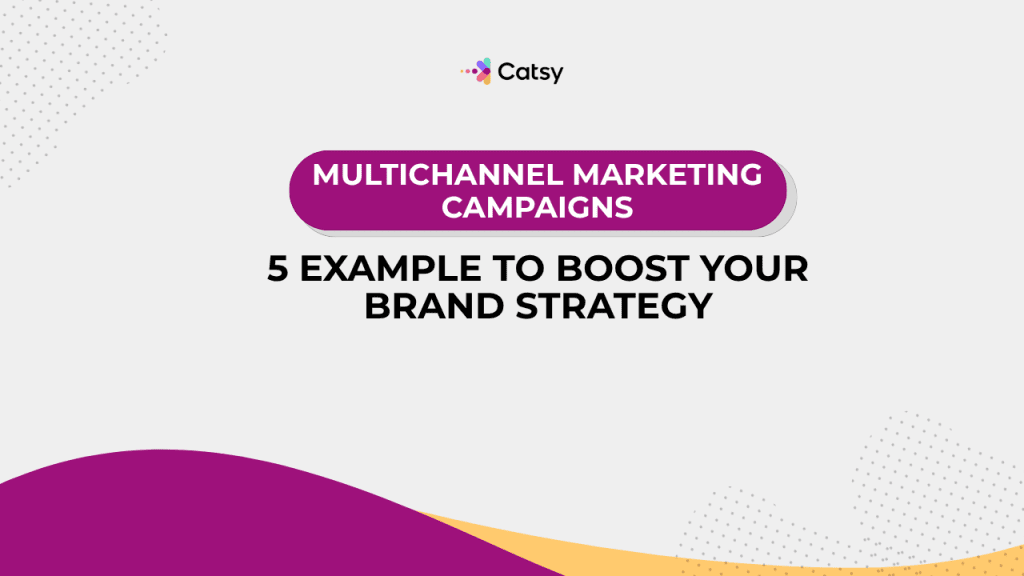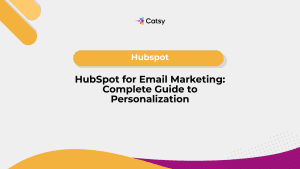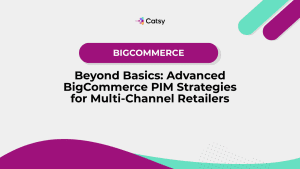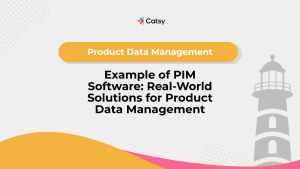5 Inspiring Multichannel Marketing Campaigns to Boost Your Brand Strategy
You know how we’re always jumping between apps, emails, websites, and even actual stores when we’re shopping or just browsing stuff? Well, brands also know this, and the smart ones? They’re everywhere: Instagram, emails, websites, and even those random ads you scroll past on apps. Yes, they’re showing up all over the place for a reason. That’s multichannel marketing in action.

What Even Is Multichannel Marketing?
Imagine you’re trying to tell your story, but not just on one platform. With multichannel marketing, you’re using different places. You are utilizing social media, emails, your website, and even physical stores. All of those platforms are used for you to talk to people and connect with them. But it’s not just shouting the same message everywhere. It’s about giving people a unique experience no matter where they find you.
Now, don’t mix it up with omnichannel marketing, which is like the next level, super smooth, fully connected everywhere. Multichannel’s more like being present in multiple spots, just not always 100% linked.
In this Article
So Why Should You Care?
These things can totally level up how your brand connects with people.
Here’s the deal:
First off, you reach more people. Think about it, everyone’s hanging out in different places. Some people scroll Instagram 24/7, others check email religiously, and some still love walking into actual stores. So, the more platforms you show up on, the more chances you have to grab their attention. That makes sense, right?
Next, you get more engagement. When you adjust your message to fit each platform, like keeping it snappy for Twitter or more visual on Instagram, people are way more likely to stop, look, and maybe even click. It’s like talking their language wherever they are.
Then, there’s the data. Oh yes. With multichannel marketing, you don’t just throw stuff into the void and hope for the best. You get actual insights from each channel, like what people are clicking on, how long they’re sticking around, or even which product they’re eyeing the most. Super helpful for making smarter decisions.
And finally, more conversions. Your goal should be to get more eyes on your brand. The more often people see your brand pop up in different places, the more familiar and trustworthy you become. They will start to associate your brand with positive feelings and will make them not only your customers but also fans. That trust eventually turns into action, like a follow, a click, or even better… a purchase.
Cool, right?
Alright, now that you’re onboard (or at least curious), let’s check out 5 real-world campaigns that absolutely crushed digital advertising on multiple channels. You’re gonna love these.
1. Coca-Cola’s “Share a Coke” Campaign
You remember this one, right? Coca-Cola started printing names on bottles. People went nuts.
Where they showed up:
- Instagram, Facebook
- In stores
- On TV and online ads
- Real-life events
Why it worked:
It felt personal. People wanted to find their names. And it made everyone talk about Coke again. Simple but so smart.
Takeaway:
Personal touches work. Try adding names, preferences, or behaviors to your own campaigns. People love feeling seen.
Make Catsy DAM and PIM Software an Extension of Your Team
Book a Free Demo2. Nike’s “You Can’t Stop Us” Campaign
You won’t believe this, but Nike managed to make a commercial out of real sports clips that had people tearing up (yup, me included). It came out during the pandemic and hit every emotion.
Where it showed up:
- YouTube and TV
- Instagram and Twitter
- Nike app
Why it worked:
They told a powerful story, no sales pitch, just emotion and unity. Plus, the editing was incredible.
Takeaway:
If you’ve got a good story, use it. Emotional content goes a long way, especially when it’s real.
3. Apple’s Product Launches
Let’s be real, Apple could launch a pencil and people would still line up. But their secret? Super smooth multichannel planning.
Where they showed up:
- Livestreams for launch events
- Product emails and landing pages
- YouTube videos
- In-store experiences
- Press + influencer buzz
Why it worked:
Everything was coordinated. No matter where you saw it, it felt the same. Clean, sleek, and very Apple.
Takeaway:
Consistency is everything. Doesn’t matter if it’s email or TikTok, make it feel like it’s all coming from the same place.
4. Warby Parker’s Try-On Campaign
This one’s genius. Warby Parker lets you try on glasses virtually in their app. Then they sent the real ones to your house to test in person.
Where they showed up:
- Mobile app
- Website
- Direct mail
- Email follow-ups
Why it worked:
It was convenient, smooth, and felt easy. You didn’t need to leave the house but still got the full experience.
Takeaway:
Think beyond the screen. Even digital campaigns can have a real-world twist!
PLM maintains your operations scalable, your data clean, and your team in sync.
And while traditional PLM systems can be complex or cost-prohibitive, you don’t need to start there. With the right processes (and the right tools), you can streamline collaboration, reduce errors, and get products to market faster—without burning out your team.
5. Spotify Wrapped
Who doesn’t love Wrapped? It’s like your own little music diary.
Where they showed up:
- In the app
- Emails
- Social media
- Influencers are hyping it up
Why it worked:
It was all about you. Super personalized, and super fun to share. And it made you feel part of the Spotify fam.
Takeaway:
Use your data! People love seeing personalized stuff, and they’ll share it for free.
Want to Try This for Your Brand?
Here’s how to get started (without going full-on Apple mode):
Okay, so you’re not launching the next iPhone, no pressure. But that doesn’t mean you can’t pull off a killer multichannel campaign! Here’s how to ease into it without feeling overwhelmed.
First, figure out your goals. Like, what do you actually want from this campaign? More traffic? More sales? Just getting your name out there? Being super clear about this helps everything else fall into place.
Next, know your people. Where do they spend time online? Are they scrolling TikTok, refreshing their inbox, or hanging out on LinkedIn? Go where they are, not just where you feel comfortable posting.
Then, be consistent. Your vibe, voice, and look should feel familiar wherever people find you. But, and this is key, you still want to tweak your message a little for each platform. What works on Instagram might totally flop in an email. It’s like dressing for the weather; you’re still you, but you might swap sandals for boots.
Use tools. Seriously. Keeping track of posts, assets, and messages across different channels? It can get chaotic fast. So use tools like a content calendar, or even better, a Product Information Management (PIM) and Digital Asset Management (DAM) system to keep everything neat and easy to find. Trust me, future-you will thank you.
Finally, keep an eye on your results. Watch what’s working and what’s just…meh. Don’t be afraid to tweak things along the way. Marketing isn’t one-and-done; it’s more like experimenting until you hit your sweet spot.
Have You Heard of Catsy?
If you’re serious about going multichannel, you need the right tools behind the scenes. That’s where Catsy comes in.
So, here’s the thing, running a multichannel campaign without the right setup is like trying to juggle flaming torches blindfolded. (Okay, maybe not that dramatic… but you get it.) You need something to keep everything organized, consistent, and running smoothly in the background. That’s exactly what Catsy helps you do.
Let’s break it down:
PIM (Product Information Management): This is your product data’s best friend. It keeps all the details, like descriptions, specs, pricing, and more, super clean, accurate, and in one place. No more digging through five spreadsheets just to find one SKU. Can you imagine?
DAM (Digital Asset Management): You know all those product photos, videos, banners, and graphics you need across your channels? Yeah, they live here. It’s like a digital library where everything’s sorted and easy to grab whenever you need it. No more “Where did we save that hero image?” panic.
Channel syndication: This part is a total time-saver. Instead of manually uploading your content to every single platform (ugh, the worst), Catsy helps you push it out automatically to ecommerce sites, marketplaces, and wherever else your products need to show up. One update = everywhere updated. Pretty cool, right?
So if you’re ready to go multichannel without the stress and chaos, having a setup like Catsy behind the scenes is a total game-changer.
Final Thoughts
So there you go, some super creative, real-life campaigns to get your ideas flowing. Pretty inspiring, right?
The best part? These campaigns didn’t just look cool. They actually worked because they told a clear story, kept the message consistent across all the channels, and made people feel something. Whether it was personalization, powerful visuals, or just great timing, each one had a smart strategy behind it.
And guess what? You don’t need to be a huge brand like Apple or Nike to pull this off. Seriously. With a little creativity, some smart planning, and the right tools to keep things organized, you can totally build a campaign that feels just as thoughtful and engaging.
Start small if you need to, pick a couple of platforms, get your message right, and test what works. Then build from there. It’s all about progress, not perfection.
So, what do you think? Feeling ready to dip your toes into a multichannel campaign of your own? Because honestly, your brand’s got this, and we can’t wait to see what you come up with.
Want more tips, tutorials, and insights on product content and e-commerce operations?
Stay connected. We post regularly to help brands like yours scale smarter.
Are You Ready To streamline your product content management?

Frequently Asked Questions
Not at all! Start with the channels your audience actually uses. It’s better to do a few well than spread yourself too thin. Quality over quantity, always.
It depends on how big you want to go. But honestly, you can start small. A few platforms, a consistent message, and some basic tools to stay organized are totally doable without breaking the bank.
There are a few differences to keep in mind. Multichannel means you’re using multiple platforms, but they don’t necessarily “talk” to each other. Omnichannel is more advanced, it connects all the platforms to create one smooth customer experience.
With multichannel marketing being so popular, there are tons of affordable tools out there to help you create content. There are also tools that can help you schedule posts and track performance. Plus, platforms like Catsy can help you manage everything in one place.
Numbers are the best way to know if your campaign is actually working. You should be aware of things like clicks, views, engagement, and conversions. Start with clear goals (like more sales or email signups), and check in regularly to see what’s working and what’s not.
That depends on the platform. Quick videos and reels are great for social, while email newsletters can go a little deeper. The key is to keep your core message consistent but tailor the format and vibe for each place.
The best thing would be to start by picking one campaign goal. Choose 2–3 platforms your audience loves, and build your content around that. Don’t try to be perfect, just take it step by step.
Subscribe For More Content
Sign up for monthly tips on how to drive revenue with product content.




